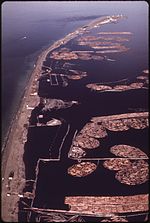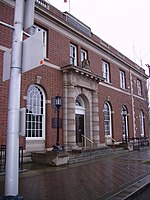Tse-whit-zen

Tse-whit-zen (č̕ixʷícən [t͡ʃʼiˈxʷit͡sən] in the Klallam language, meaning "inner harbor") is a 1,700- to 2,700-year-old village of the Lower Elwha Klallam Tribe located along the Port Angeles, Washington waterfront. It is located at the base of Ediz Hook on the Olympic Peninsula. During construction in August 2003 of a graving dock associated with replacement of the Hood Canal Bridge, the village's cemetery and other prehistoric remains were discovered. The construction project was abandoned at this site because of the importance of the find, as the village was intact. It is the largest pre-European contact village site excavated in Washington State.Archaeological excavation has revealed more than 10,000 artifacts and more than 335 intact skeletons. The Washington State Department of Transportation decided to halt all construction efforts related to the graving dock on December 21, 2004. Since then it has worked to ensure the preservation of remains and artifacts already uncovered by the construction. As a result of a legal settlement with Washington State, the tribe received the land of the village site, as well as $2.5 million to build a cultural center or museum at the site. The tribe intended to begin construction around 2012.
Excerpt from the Wikipedia article Tse-whit-zen (License: CC BY-SA 3.0, Authors, Images).Tse-whit-zen
Olympic Discovery Trail,
Geographical coordinates (GPS) Address Nearby Places Show on map
Geographical coordinates (GPS)
| Latitude | Longitude |
|---|---|
| N 48.1302 ° | E -123.4618 ° |
Address
Olympic Discovery Trail
Washington, United States
Open on Google Maps










